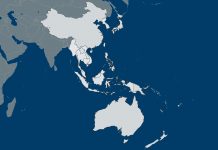Last week, headlines were dominated by the precipitous decline in the Chinese stock market. Overall, Chinese stocks started the year with a 12 percent drop in the first week, as trading was shut down twice by rapid declines that triggered a circuit breaker mechanism designed to stop markets from free falling. The circuit breakers were so ineffective at controlling volatility that they have since been eliminated. As we have written before, the Chinese stock market itself behaves like a relatively meaningless casino because it is insulated from global markets. Also, the correlation between economic reality and performance on the Chinese stock market is even less clear than in Western markets. What was important about the Chinese stock market collapse last week was the underlying fragility in the Chinese economy that it revealed.
That China’s economy was in the doldrums was not a new story. But no one we know of predicted on Jan. 3 that the next day, Jan. 4, was going to be the day that Chinese investors would reach a point of such low confidence in Beijing’s ability to manage the economy that a massive sell-off would begin. Geopolitical Futures is, at its heart, a forecasting company, one that has modeled what the world will look like in 2016 and in the next 25 years. As we face the beginning of a new week and ask ourselves what new developments the next seven days will bring, a question is begging to be asked: How does one try to identify that singular disruptive event that causes all the other dominoes to fall?
The developments that followed the spasm in China’s markets were in reality quite predictable. Declines in international markets around the world, including a 6 percent decline for the Dow in the U.S. Reports that Chinese President Xi Jinping was pressing ahead with both his military reforms and anti-corruption purges. Attempts to tighten the Communist Party’s grip on China in the face of a new era of Chinese economic history that will do nothing less than challenge the current regime’s survival. Continued decline in oil prices and commodities in general as it finally became irrefutable that the combination of increased supply and lower demand was the reality for the foreseeable future.
That Saudi Arabia would announce in an interview with The Economist that it was considering an initial public offering for state-owned oil company Aramco, or that the People’s Bank of China would reveal that foreign reserves had fallen in China for the first time in 22 years, were minor surprises – but in keeping with general trends. Saudi Arabia depends on oil revenues and is in need of money following the significant decline in oil prices. Anyone paying attention to China knew that massive amounts of Chinese capital were leaving the country, especially after the summer’s eerily familiar stock market collapse. It is easy to track the dominoes that are lined up once the first has been knocked into the second. But identifying that first tipping point is the element of forecasting that is so difficult, and so important.
The world will again be watching the Shanghai Composite Index this week with anxious concern. But these stories will, for all intents and purposes, be about the past. There will be opinions, analysis and “new” facts being raised about the trigger for last week’s drop in the stock market, that is, until a new shiny story comes along, such as lame-duck President Obama’s swan song State of the Union address on Tuesday, or Kim Jong-Un saying that next he is going to test a super hydrogen bomb. The difficult task that this publication has set for itself is to get beyond the past and beyond those headlines – to attempt to find the next Chinese stock market collapse before it happens.
With that mission in mind, consider the following facts. The top 11 suppliers China imports from, in descending order by value, are: South Korea, Japan, the United States, Taiwan, Germany, Australia, Malaysia, Brazil, Saudi Arabia, South Africa and Russia. These countries can be divided into two basic categories based on the types of products they export to China. Australia, Brazil, Saudi Arabia, South Africa and Russia belong to the class of countries that export commodities like oil, iron and soy. South Korea, Japan, the U.S., Taiwan, Germany and Malaysia export a wide range of manufactured goods, from simple electronic parts (Malaysia) to advanced medical technology (South Korea), and everything in between.
Both of these types of exporters are being hit hard by China’s slowing growth. But the first salient reality is that those exporting commodities are being hit twice, by both China’s reduced demand and the related drop in the price of commodities, a drop which is showing no signs of abating. This group, moreover, includes countries like Brazil, Saudi Arabia and Russia, which are in the midst of real economic and political crises.
Take Australia for example. Australia depends on exports for 20.9 percent of its GDP, according to the World Bank, and 33.9 percent of those exports are bound for China. Furthermore, iron ore was about 25 percent of Australia’s total exports in 2014 and China accounted for an astronomical 76.8 percent of these exports, according to UN Comrade statistics. Five years ago, the going rate for iron per dry metric ton was $173.63. On Jan. 8, it was $41.50. Looking at each of the economies mentioned above tells a similar story. Even in a case like Brazil, where exports are only 11.5 percent of GDP, the combination of reduced supply to its top importer (China), the collapse of commodity prices, and excessive government spending is causing Brasilia to expect a decline in growth by at least 2.5 percent. China only accounts for 4.4 percent of Russia’s exports – but Russia planned its 2016 budget with $50 per barrel oil prices in mind, and so every little cut in revenue hurts Moscow right now.
This is not to suggest that exporters of manufactured goods are faring better. South Korea, which depends on exports for 50.6 percent of its GDP, has seen exports decline for 12 consecutive months, in large part due to China’s decreased demand. In 2014, 25.4 percent of South Korea’s exports went to China. The situation is so bad that South Korean President Park Geun-hye has called for an emergency economic contingency plan. The stats are particularly stark for Malaysia, where exports account for 73.8 percent of GDP and China is the destination for 12.1 percent of those exports.
But none of these exporters of manufactured goods is yet in crisis to the extent of Brazil, Saudi Arabia and Russia. The key word however is yet. The most troubling country on the list of those that have yet to feel deeply the ramifications of China’s decline is Germany. Exports constitute 45.7 percent of Germany’s GDP. And while only 6.6 percent of German exports went to China in 2014, that number is misleading. For some industries, like the auto industry, China was more important, accounting for 10.4 percent of car exports and 17.5 percent of car parts that Germany exported in 2014. It is also impossible to account for indirect sales. Germany is a large producer of components that are sold to one country, shipped to a second country, and then sold to a third. This is to say nothing of how the global ramifications of China’s slowdown will impact the capacity of Germany’s usual customers to buy.
In addition, there is a second way to divide the countries that will be affected by decreased demand from China. Rather than categorizing them according to the type of goods they export, one can sort them based on their dependency on exports. One group depends on exports for less than 17 percent of GDP: Japan, the United States and Brazil. The rest depend on exports to a far greater degree, including four countries that rely on exports for more than 45 percent of their GDP: South Korea, Germany, Malaysia and Saudi Arabia. Together, these four countries account for almost 10 percent of the world’s total GDP. Not by coincidence, three of them – South Korea, Germany and Saudi Arabia – are essential to our forecast for 2016.
Our model tells us that countries that depend on exports are in for a very rough year in 2016. It also identifies the countries that are in the most trouble and will have the deepest effect on the global system. Our 2016 forecast also predicts that China’s current growing dictatorship will moderately intensify and the underlying economic problems will grow as well, as episodes reminiscent of the 2015 stock market collapse will emerge. After last week’s events – a new Chinese stock market collapse, the public revelation that its foreign reserves fell in 2015, the lack of confidence in China’s political class’ ability to run the economy – the next question has to be the one with which we began: What next?
Part of the answer to this question is “more of the same.” China will continue to struggle through its structural challenges. Commodity-dependent exporters like Russia and Saudi Arabia will continue to face economic woes that will weaken their political power and change their behavior as a result, since weakness has a tendency to encourage aggressiveness. But the other part of the answer is far more interesting and compelling, for it deals with what has not yet come to pass. And that is, namely, a crisis for the countries that depend on exports, particularly of manufactured goods. This represents some of the largest economies in the world, Germany chief among them. It may be a while before the headlines catch up with these countries’ struggles, but that is where our attention is laser-focused.







 The Road to 2040
The Road to 2040